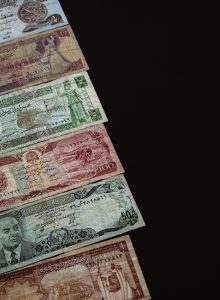Forex investing is the act of buying and selling currencies with the aim of making a profit. It is a complex industry that requires a deep understanding of various mathematical concepts. One such concept is linear algebra. Linear algebra is the branch of mathematics that deals with the study of vectors, matrices, and linear equations. In this article, we will explore how linear algebra can be used in forex investing.
1. Correlation Analysis
Linear algebra can be used to perform correlation analysis on currency pairs. Correlation analysis is the study of the relationship between two or more variables. In forex investing, it is used to determine the relationship between different currency pairs. This is important because it helps investors to diversify their portfolios and reduce risks.
To perform correlation analysis using linear algebra, we need to first create a matrix of the currency pairs we want to analyze. The matrix will contain the historical data of the currency pairs. We can then calculate the correlation coefficient between the pairs using the following formula:
r = (nΣxy – ΣxΣy) / sqrt((nΣx^2 – (Σx)^2)(nΣy^2 – (Σy)^2))
where:
– r is the correlation coefficient
– x and y are the currency pairs
– Σ is the sum of the values
– n is the number of data points
The correlation coefficient ranges from -1 to 1, with -1 indicating a perfect negative correlation, 0 indicating no correlation, and 1 indicating a perfect positive correlation. A positive correlation coefficient means that the two currency pairs move in the same direction, while a negative correlation coefficient means that they move in opposite directions.
2. Risk Management
Linear algebra can also be used in risk management. In forex investing, risk management is the process of identifying, assessing, and mitigating risks associated with currency trading. One way to do this is by using linear algebra to calculate the covariance matrix of the different currency pairs.
The covariance matrix is a square matrix that shows the covariance between different variables. In the case of forex investing, it shows the covariance between different currency pairs. We can use the covariance matrix to calculate the portfolio variance and the portfolio standard deviation.
The portfolio variance is the weighted sum of the variances of each currency pair in the portfolio. The portfolio standard deviation is the square root of the portfolio variance. These two metrics are important because they help investors to understand the risk associated with their portfolio.
3. Technical Analysis
Linear algebra can also be used in technical analysis. Technical analysis is the study of past market data to predict future movements in the market. It is based on the assumption that market trends, patterns, and behaviors repeat themselves over time.
One way to use linear algebra in technical analysis is by using moving averages. Moving averages are a common tool used in technical analysis to smooth out price data by creating a constantly updated average price. We can use linear algebra to calculate the moving average of a currency pair over a specific time period.
To calculate the moving average, we first need to create a matrix of the historical data of the currency pair. We can then create a vector of the weights to use for the moving average. The weights are typically calculated using the exponential function. We can then multiply the matrix by the vector to get the moving average.
Conclusion
Linear algebra is a powerful mathematical tool that can be used to analyze and predict movements in the forex market. It can be used for correlation analysis, risk management, and technical analysis. By incorporating linear algebra into their investment strategies, forex investors can make more informed decisions and reduce their risks.





